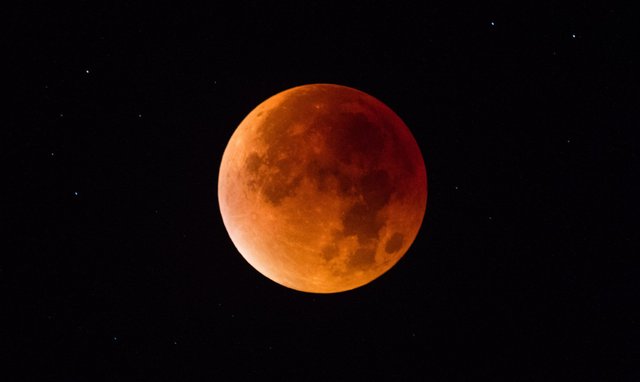How and when to watch Wednesday's 'super blue blood moon'

The full moon on Wednesday will be the second in a month, making it a blue moon. It'll be at the part of the moon's orbit that defines a super moon. And there will be a total lunar eclipse.
The total lunar eclipse is the most exciting for astronomers — it can give the moon a reddish tint, which is why it's sometimes called a blood moon.
To catch the eclipse, you'll need to look up at a certain time: early in the morning in the US, or later that night in other parts of the world.
You might want to set your alarms just a bit earlier Wednesday morning, Jan. 30, if you don't want to miss something that happens only once in a "super blue blood moon."
Michael Gaffey, a Chester Fritz Distinguished professor in the University of North Dakota Space Studies Department, said the lunar trifecta happens only once every two to three years when the timing and alignment of the sun, Earth and moon are just right.
First, the moon is called a supermoon because its elliptical orbit will be at its closest point to the Earth, known as perigee. This makes the moon appear about 20 percent larger and 15 percent brighter than usual.
The separate "blue moon" distinction has nothing to do with the moon's color, but rather is the name given to the second full moon of the month.
And the "blood moon" comes into play when that blue moon passes through Earth's shadow to give viewers a total lunar eclipse.
"They call it a blood moon because generally the eclipses don't go completely black," Gaffey said. "There is light coming in around the edge of the atmosphere, and that tends to make the moon red in color. It gets dark, and then very dark red."
The effect will be visible starting just before 5 a.m. and peaking around 6:50 a.m.
Gaffey said Chinese cultures used to describe the moment the eclipse begins as "a dragon taking a bite out of the moon."
"If anybody is out, it will be noticeable. Essentially the moon goes out," Gaffey said. "It takes about 45 to 50 minutes to go from first contact to full eclipse, but it's a very noticeable effect. It's not subtle."
Gaffey said priests in ancient cultures first noticed the pattern in blood moons and used it to predict when future eclipses would occur.
"It kept them telling the rulers how to run things," he said. "They were basically astrologers and astronomers. They watched the sky to determine things like planting seasons, harvest seasons and such. They were much more aware than modern people because very few of us live in areas dark enough to see much about the sky."
Gaffey said he certainly will be up and at 'em to catch a glimpse of the special moon Wednesday. "I'm actually probably heading off to work at that time," he said with a laugh. "But it's definitely worth getting up (to see)."